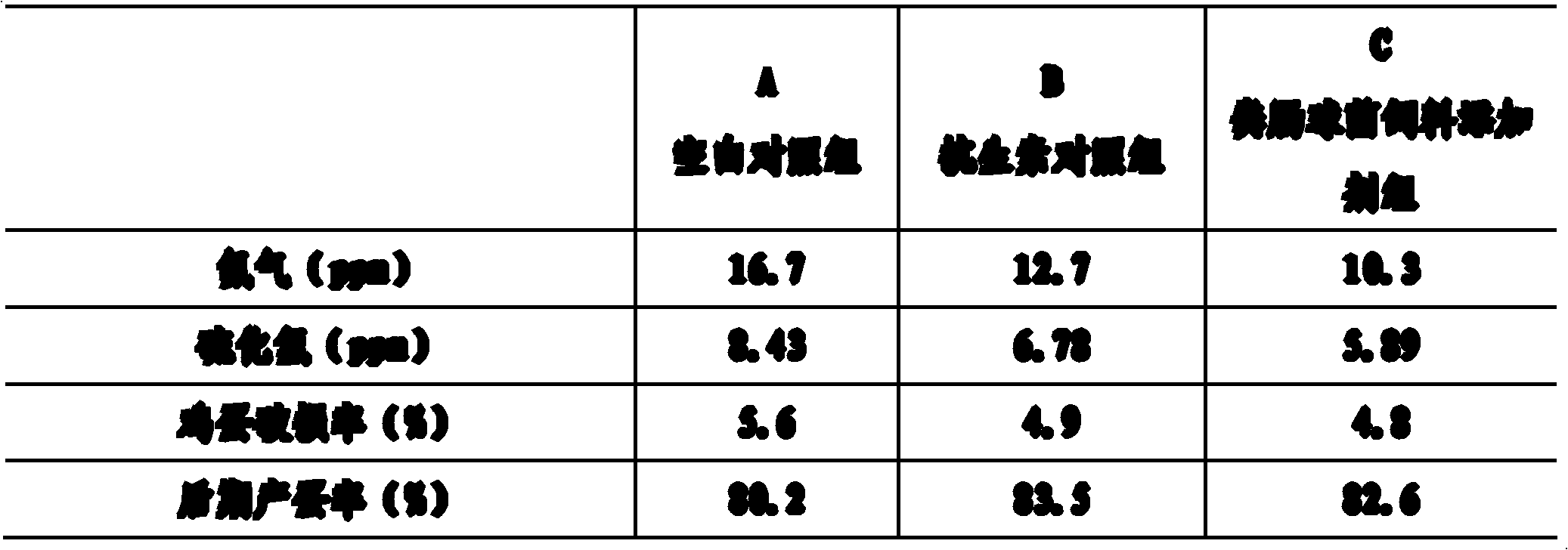Enterococcus faecalis and applications and feed additive and leavening agent thereof
A technology for feed additives and Enterococcus faecalis, which is applied in applications, animal feed, animal feed, etc., can solve the problems of high temperature tolerance, difficult bacterial activity, and poor strain characteristics, so as to achieve strong stress resistance and reduce breeding costs. Cost, the effect of improving animal immunity
- Summary
- Abstract
- Description
- Claims
- Application Information
AI Technical Summary
Problems solved by technology
Method used
Image
Examples
Embodiment 1
[0024] Example 1 Screening of Enterococcus faecalis CGMCC No.5092.
[0025] 1. Primary screening
[0026] Take 5g of samples of pig manure, cow manure and chicken manure, etc., soak them in 20ml of sterile 0.85% normal saline, oscillate to disperse the samples, make the samples fully contact with the normal saline, let them stand in a constant temperature water bath at 70°C for 3 minutes, take The supernatant was centrifuged at 5000 rpm for 10 minutes, and the supernatant was discarded. Add the centrifuged bacterial cell pellet to 10ml of artificial gastric juice, let it stand at 37°C for 2 hours, then centrifuge to collect the bacterial cell, add the bacterial cell pellet to 10ml of artificial bile salt, let it stand at 37°C for 4 hours, collect the bacterial cell, dilute and apply Spread on LB medium. After culturing in a 37°C incubator for 12-24 hours, the colonies were purified and isolated. The obtained bacteria were preserved and further re-screened.
[0027] The pre...
Embodiment 2
[0033] Molecular Identification of Example 2 Enterococcus faecalis
[0034] Use the bacterial universal primers to carry out PCR identification on the screened bacterial strains: extract the template DNA according to the operating instructions of the bacterial DNA extraction kit. Use the upstream primer 5'-AGAGTT TGA TCC TGG CTC AG-3' of the 16S rRNA conservative sequence, see SEQ ID No.2 and the downstream primer 5'-GGT TACCTT GTT ACG ACT T-3, see SEQ ID No.3 for amplification Bacterial 16s rRNA gene fragment. After sequencing, it is found that the bacterium belongs to Enterococcus faecalis, and the sequencing result of the amplified fragment is shown in SEQ ID No.1.
Embodiment 3
[0035] Example 3 Verification of Stress Resistance of Enterococcus faecalis
[0036] (1) High temperature resistance
[0037] Collect Enterococcus faecalis cultured for 12 hours by centrifugation, put them in normal saline for resuspension, take samples and spread them, and count the number of live bacteria; then heat the normal saline in a water bath at 70°C for ten minutes, cool it down rapidly, and then Plate counting was carried out, and the number of residual viable bacteria was 85.3%.
[0038] (2) Tolerance of artificial gastric juice
[0039] Take 0.5ml of Enterococcus faecalis cultured for 12h, dissolve it in 4.5ml of normal saline, and use the plate count method to count the number of viable bacteria. Then take the quantitative above-mentioned bacterial liquid and add it to 4.5ml of artificial bile salt medium, let it stand at 37°C for 2h, count the number of remaining viable bacteria by plate counting method, and the number of remaining viable bacteria is 92.2%.
...
PUM
 Login to View More
Login to View More Abstract
Description
Claims
Application Information
 Login to View More
Login to View More - R&D
- Intellectual Property
- Life Sciences
- Materials
- Tech Scout
- Unparalleled Data Quality
- Higher Quality Content
- 60% Fewer Hallucinations
Browse by: Latest US Patents, China's latest patents, Technical Efficacy Thesaurus, Application Domain, Technology Topic, Popular Technical Reports.
© 2025 PatSnap. All rights reserved.Legal|Privacy policy|Modern Slavery Act Transparency Statement|Sitemap|About US| Contact US: help@patsnap.com



